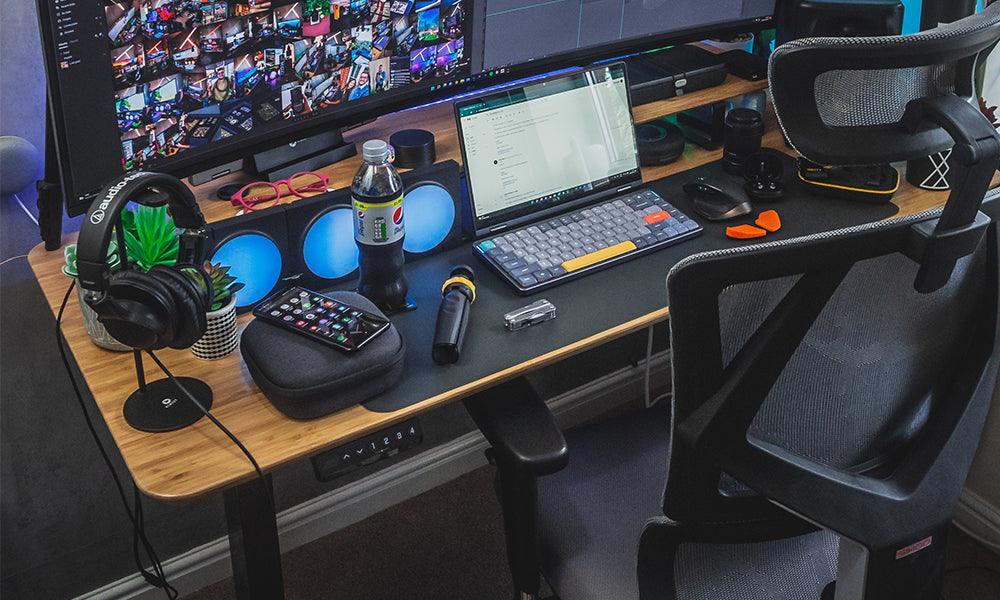In the modern era where a significant portion of our daily lives is spent sitting, the importance of ergonomic seating cannot be overstated. Whether it's at the office, in front of the computer, or during leisure time, the choice of chair and the way we sit can have a profound impact on our health and well-being. One common question that arises in discussions about proper seating is whether your feet should touch the ground when sitting in a chair. In this article, we'll explore the ergonomic considerations and health implications surrounding this debate, providing insights into the optimal sitting position for different individuals.
The Basics of Ergonomics
Ergonomics is the science of designing and arranging items to enhance efficiency and comfort in the working environment. When it comes to chairs, the main goal is to support the body's natural posture, preventing strain and discomfort during prolonged periods of sitting. Proper ergonomics in seating can contribute to improved productivity, reduced risk of musculoskeletal disorders, and overall well-being.
Should Your Feet Touch the Ground?
The question of whether your feet should touch the ground when sitting in a chair doesn't have a one-size-fits-all answer. The ideal seating position can vary based on factors such as your height, the type of chair you're using, and the specific activities you're engaged in while seated.
Chair Height and Feet Placement:
Standard Chairs: In a traditional office or home setting, standard chairs are often designed with the assumption that the user's feet will touch the ground. When sitting in these chairs, your feet should ideally rest flat on the floor, forming a right angle at the knees.
Adjustable Chairs: Many modern office chairs come with adjustable features, allowing users to customize the chair height to match their individual preferences and body proportions. In such cases, your feet should still be able to comfortably touch the ground or be supported by a footrest.
Impact of Chair Height on Posture:
Feet Hanging: If your feet dangle above the ground because the chair is too high, it can lead to poor posture and increased pressure on the thighs. Over time, this may contribute to discomfort, fatigue, and even circulation issues.
Flat Feet: On the other hand, if the chair is too low, your knees may be positioned higher than your hips, causing strain on the lower back. Maintaining a flat-footed position helps distribute your weight evenly and reduces stress on the spine.
Consideration for Specific Activities:
Desk Work: When working at a desk, especially with a computer, it's essential to find a comfortable and supportive position. Your feet should be able to rest on the ground or a footrest, promoting stability and reducing the risk of discomfort.
Leisure Seating: In more relaxed settings, such as when watching TV or reading, the requirement for feet to touch the ground may be less stringent. However, supporting your feet with a footrest can still enhance comfort and spinal alignment.
Individual Variations:
Height Differences: Individuals come in various shapes and sizes, and what works for one person may not be suitable for another. Taller individuals may require higher chair settings, while shorter individuals may need additional support, such as a footrest, to maintain proper posture.
Health Conditions: People with specific health conditions, such as back problems or circulatory issues, may benefit from personalized seating solutions. Consulting with a healthcare professional or ergonomic specialist can help tailor recommendations to individual needs.
The Role of Footrests
Footrests, or footstools, play a crucial role in creating an ergonomic sitting environment. These accessories can be particularly beneficial in situations where the chair height is not adjustable, or when the individual's height requires additional support. Here are some key points to consider:
Support for Shorter Individuals:
For individuals with shorter stature, a footrest can help bridge the gap between the chair and the ground, ensuring that the feet are properly supported.
Reduced Pressure on the Back of Thighs:
In situations where the chair is too high, a footrest can alleviate pressure on the back of the thighs, preventing discomfort and promoting better circulation.
Customizable Ergonomics:
Footrests provide a customizable element to ergonomic seating, allowing users to fine-tune their sitting position for optimal comfort and posture.
Dynamic Seating:
Some individuals prefer the freedom to change their sitting position throughout the day. A footrest can facilitate dynamic sitting, encouraging movement and reducing the risk of stiffness.
Conclusion
In the ongoing debate about whether your feet should touch the ground when sitting in a chair, the key takeaway is that there's no one definitive answer. The optimal seating position depends on various factors, including individual height, chair design, and the specific activities being performed while seated.
Ergonomics should be the guiding principle when selecting and arranging chairs to ensure that they promote a healthy and comfortable sitting experience. Whether your feet touch the ground or are supported by a footrest, the goal is to maintain proper posture, reduce strain on the body, and enhance overall well-being.
As we spend increasing amounts of time in sedentary activities, understanding and prioritizing ergonomic principles in seating becomes paramount. By making informed choices about chair height, foot placement, and the use of accessories like footrests, individuals can create environments that support their health and productivity in the long run.



































